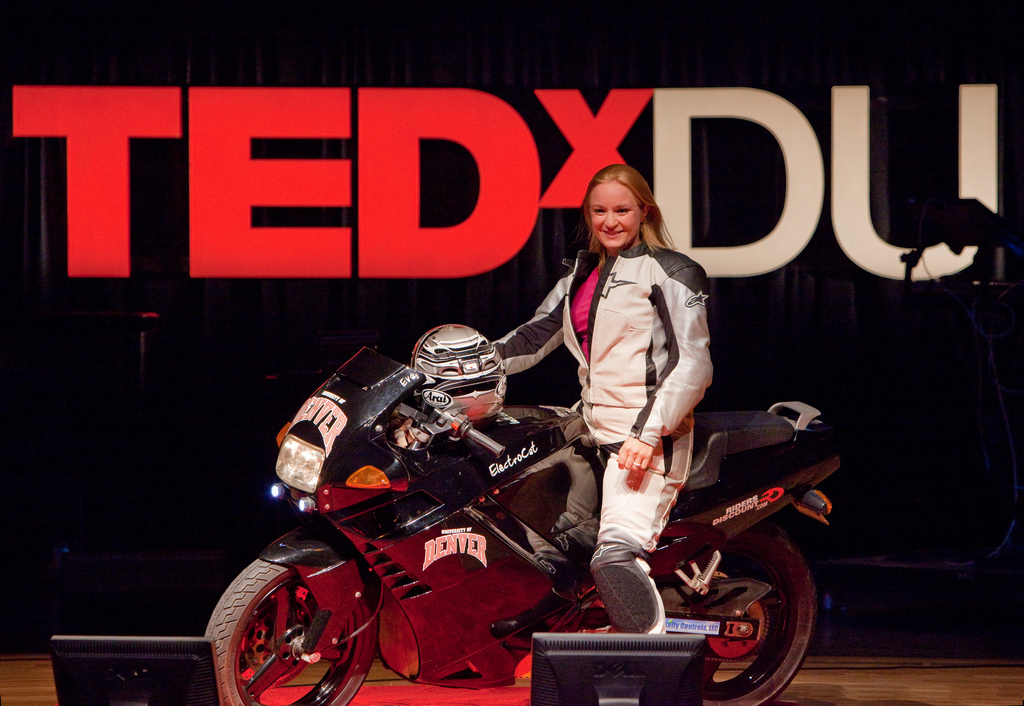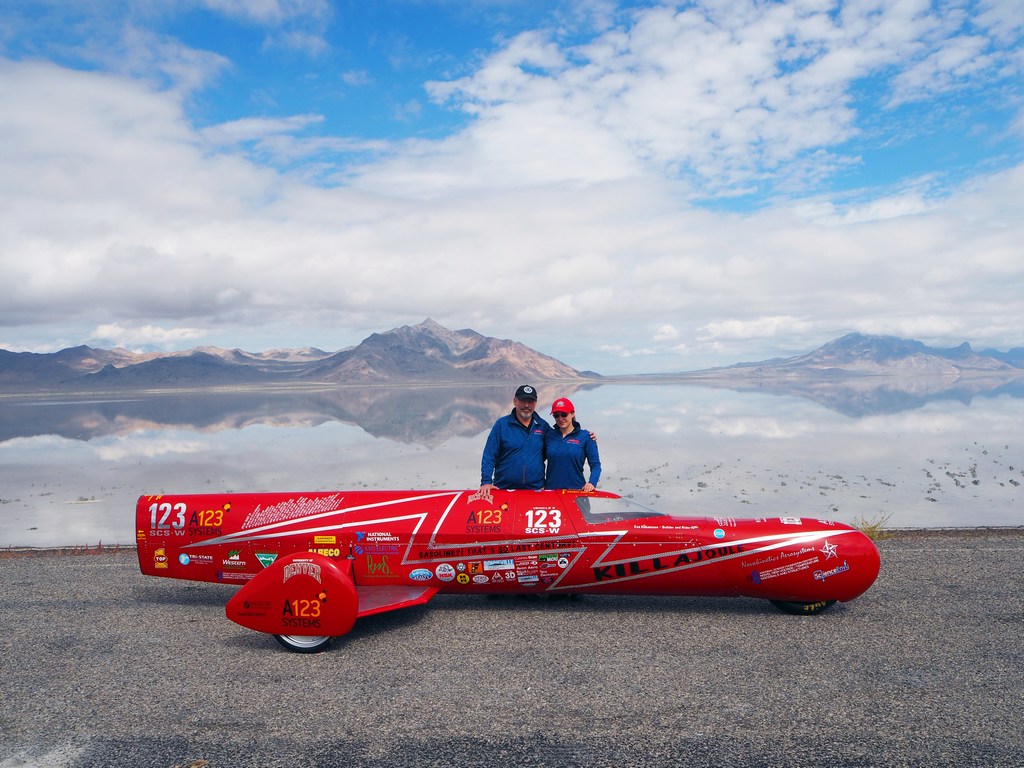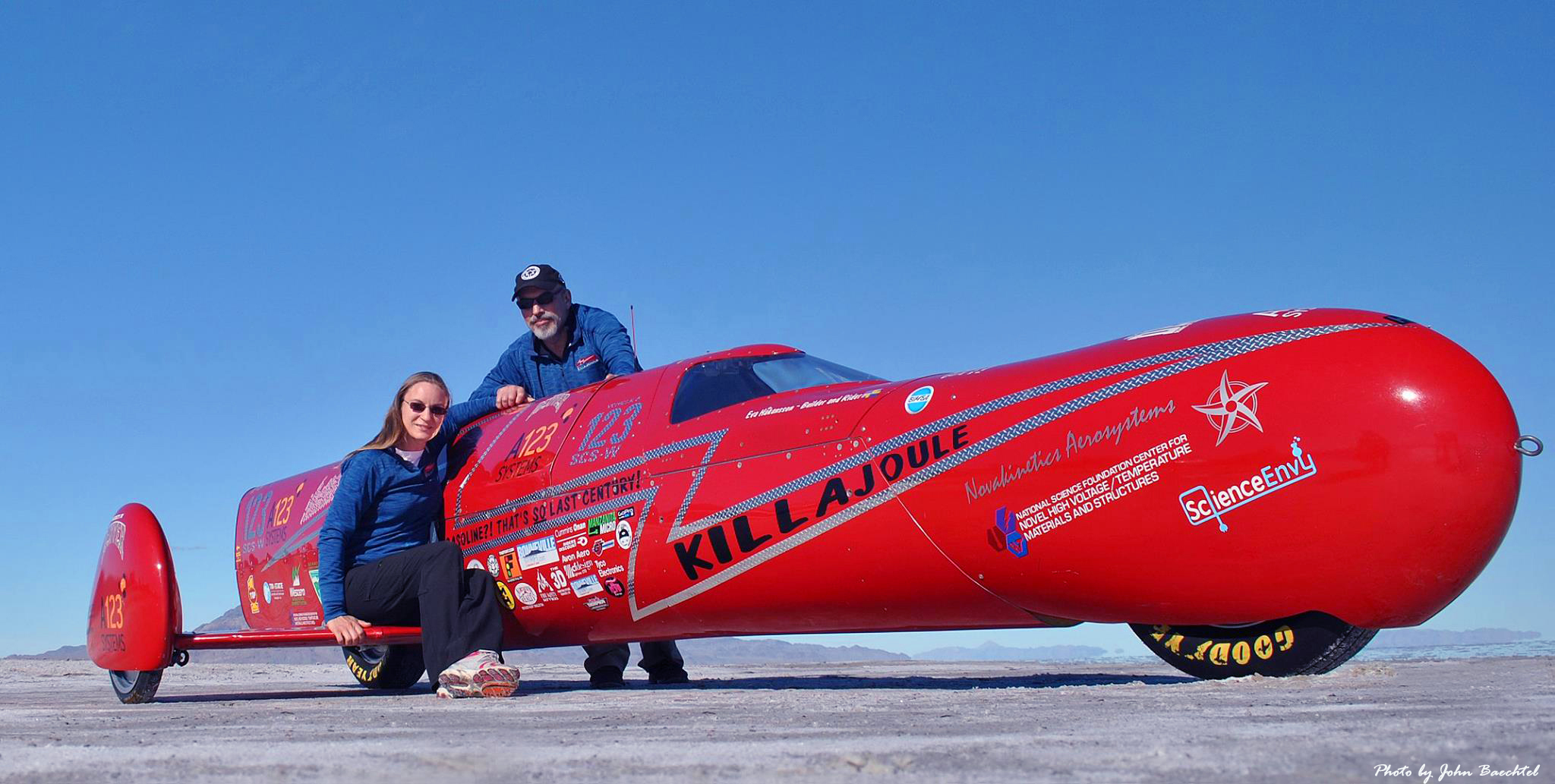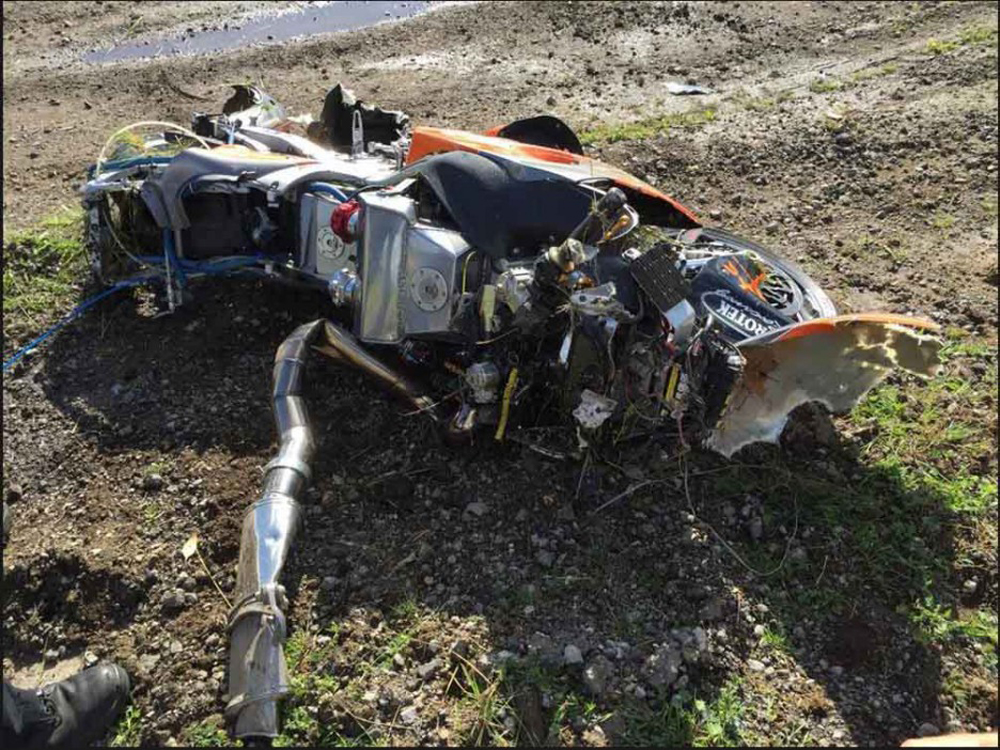Go Faster, Go Green
The story of Eva Hakansson: the fastest female motorcyclist
John Newman
Your Dad, Sven, is a mechanical engineer who builds and successfully races his own bikes. Your Mum, Lena, is also an engineer and Dad's race mechanic. This is the genetic legacy inherited by their daughter, Eva. So, understandably, she learned to ride, design and build motorcycles. Oh, and by the way, her two brothers are engineers too.
Sven Hakansson was Swedish 50cc Road Race Champion in 1962, riding a bike he built himself. He was also involved in the Swedish Monark and Lito motorcycle factories which gained success in motocross world championship races, and he went on to design and build a 500cc vee-twin two-stroke racer in 1969, simply named 'HM'.
Sixteen is the minimum age for riding a motorcycle in Sweden, and as soon as that life landmark was reached, Eva Hakansson got hold of her first bike: a 1972 125cc Moto Guzzi. It was the proverbial pile of bits, but with Dad's help, it became her first complete motorcycle.
Her early academic years in science and technology are a scary and yet admirable list of achievements, which point the way to later theoretical and practical engineering successes. Amongst these were a bachelor's thesis on the political incentives for the introduction of low emission cars. This fueled – pun intended – her passion for electric drive and the intricate relationship between technology, economics, and the environment.
"The Hybrid Car the Future is here already"
Take one Cagiva 125cc two stroke, add one year in the workshop, some help from Sven, and the application of theory to practice, and out comes the first road-legal electric bike in Sweden in 2008, the ElectroCat. One result of this build was an invitation to present the bike to the Swedish Parliament, and to talk to them about the advantages of electric vehicle power... it just about fitted the lift of the parliament building – can we, even in our wildest motorcycle imaginings, conceive of a bike being presented to the men and women in suits in that gothic pile in London?
During the year of the build (2007), Eva also found time to author a book about hybrid electric cars, titled Hybridbilen Frantiden ar redan har!'... that's 'The Hybrid Car the Future is here already' for the non-Swedish speakers out there! While carrying out research she wrote to an American guy, Bill Dube, asking for permission to use a picture of his electric drag bike, 'KillaCycle', in the book. They became email friends, met at a symposium about electric vehicles in Los Angeles, and then decided to marry.

Eva with ElectroCat
Before the marriage decision, they were faced with a situation of being on different parts of the planet. To resolve the problem of "commuting" between Colorado and Sweden, Eva enrolled in a university engineering degree which entitled her to a student visa...sorted.
Their joint interest in the development of electric power centered around running the KillaCycle. It was fast, achieving 174mph terminal speed on a quarter-mile strip in 7.6 seconds - meaning 0-60mph was reached in less than second. Impressive, but Bill and Eva wanted to achieve more spectacular results in order for the potential of electric vehicles at speed to be demonstrated to a wider world audience.
The Fastest Female Motorcyclist
In 2010 they set about constructing a streamliner motorcycle,
'KillaJoule', with the eventual aim of hitting 300mph – a Joule describes the international system unit of electrical, mechanical and thermal energy. At the outset they were woefully optimistic, giving themselves a six-month timetable and a budget of $10,000. It took a lot - lot - longer and cost a lot - lot - more. During the first trials on the Bonneville Salt Flats, Eva had difficulty keeping the bike upright. So they built a small sidecar platform that sits at the rear, solving the stability problem.

With husband
As if this, Bill's day job as a scientific instrument maker, Eva's study programme, and the further development of KillaJoule wasn't a full enough schedule. Eva decided to enter ElectroCat in the famous Pikes Peak Hill Climb in Colorado, the first electric bike to tackle the 12 mile 156 turn time trial at high altitude. Eva crashed coming down the hill during a practice run, sustaining a broken wrist, but their rider, John Scollon, an experienced Pikes competitor, completed his run in the event. Though way down the timing list, it was the first electric bike to finish.
Progress with KillaJoule became stuck. They couldn't find enough power to get beyond 200mph, and the project became frustrating and even boring. But in 2014, they made progress, including a significant change in the battery technology from their US sponsor, A123 Systems. They returned to Bonneville and were rewarded with increased speed, including a two-way run timed at 240.726mph: the fastest official two-way speed record for a female motorcyclist.
Their data and mathematical calculations told them they should be able to reach 265mph, just exceeding the record set in the UK by Becci Ellis, riding her conventional Suzuki Hayabusa. Eva returned to the track determined to increase her speed. Her speedometer was showing 259mph, which she suspected was pessimistic (the front tyre grows at speed and offsets the speedometer reading). Then the timing crew reported over the radio that she had run at 270.224. She was the fastest female motorcyclist, and 300mph could be attainable...
Becci Ellis and the Suzuki Hayabusa
Then there's Becci. Last August at the Elvington Raceway in Yorkshire, the Suzuki Hayabusa that Becci Ellis was riding was caught by a gust of wind. She had just piloted the bike to around 254mph and was slowing after the timing line, but ran out of control and sustained a broken ankle and severe bruising in the crash that followed.
Becci, who is 48 but has been around bikes since she was a youngster, had captured the world speed record for a woman on a conventional motorcycle at 264.3mph, and was working to capture the overall record held by American Bill Warner at 296mph – the day after achieving this, Warner died in a crash attempting to go even faster.
The Hayabusa engine that Becci sits over pushes out between 650-700bhp, it's turbo charged and is prepared by husband Mick, who raced drag bikes himself back in the nineties. They are also assisted by a group of friends in the workshop and out on the tracks.
The bike was a mess after the crash and Becci was transferred to hospital by air ambulance. As the injuries were not that serious, she was able to be discharged and returned to the track the next day to confirm that she was okay - and collect her winners medal. Brave stuff, and she's intending to rebuild and ride again.
Will it be a woman rider who reaches the elusive 300mph target? And will conventional internal combustion or electric power take them there?
We hope you enjoyed reading about Eva Hakansson. Any comments, send them to
[email protected].






